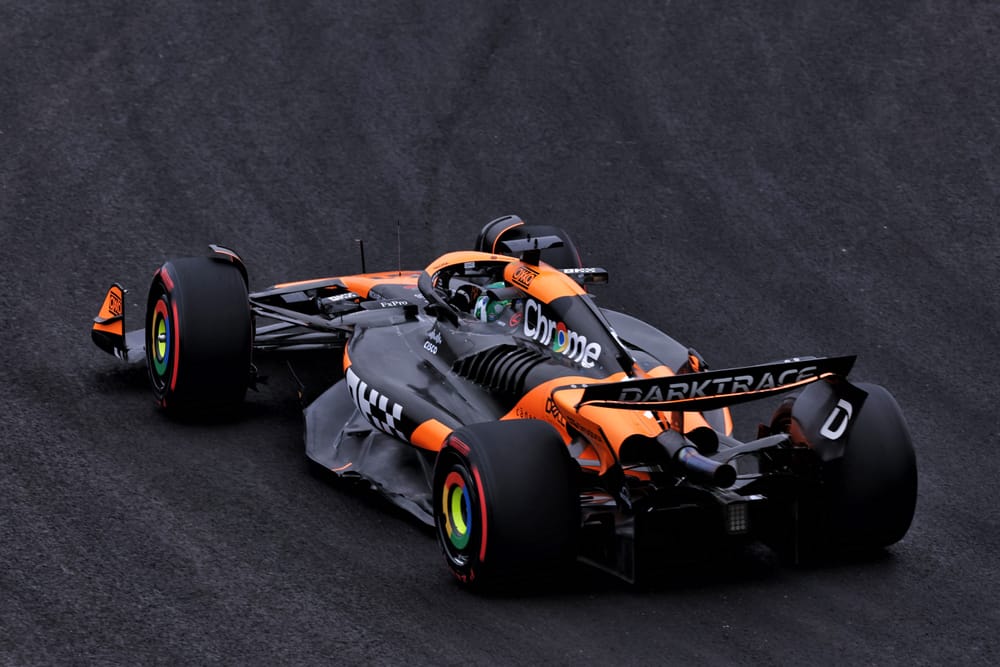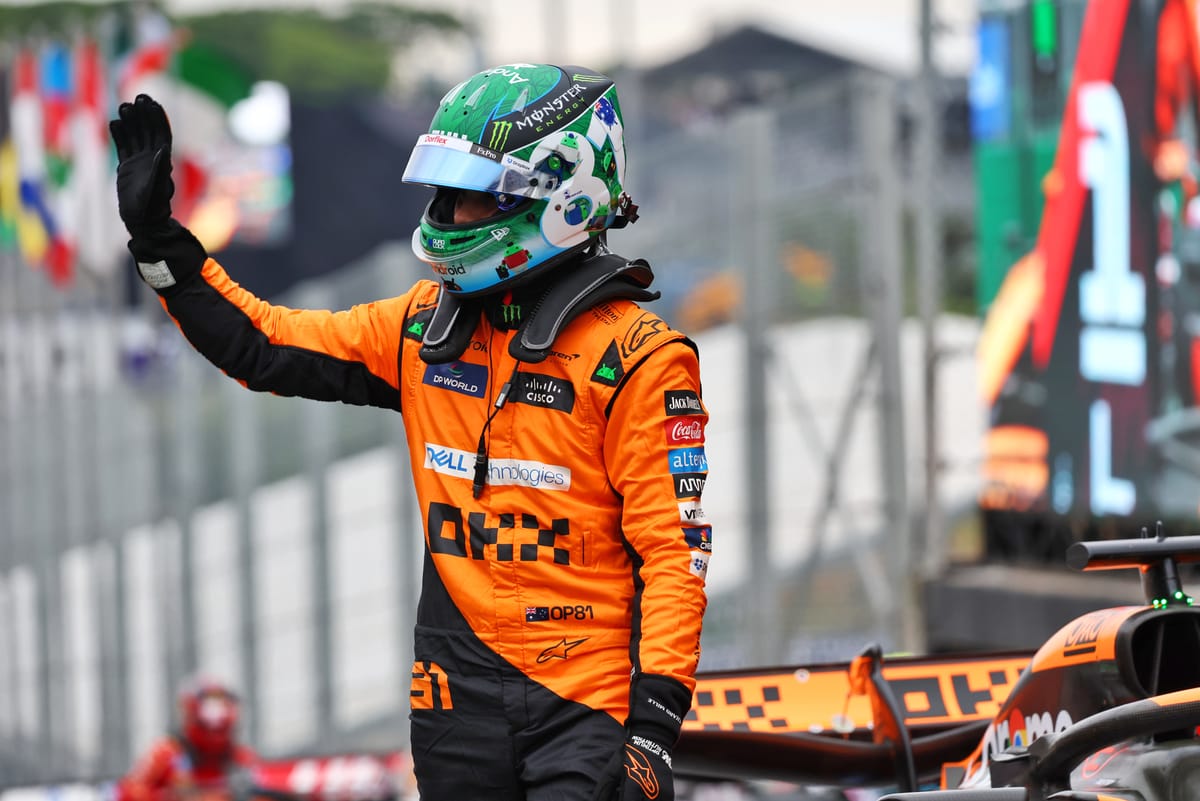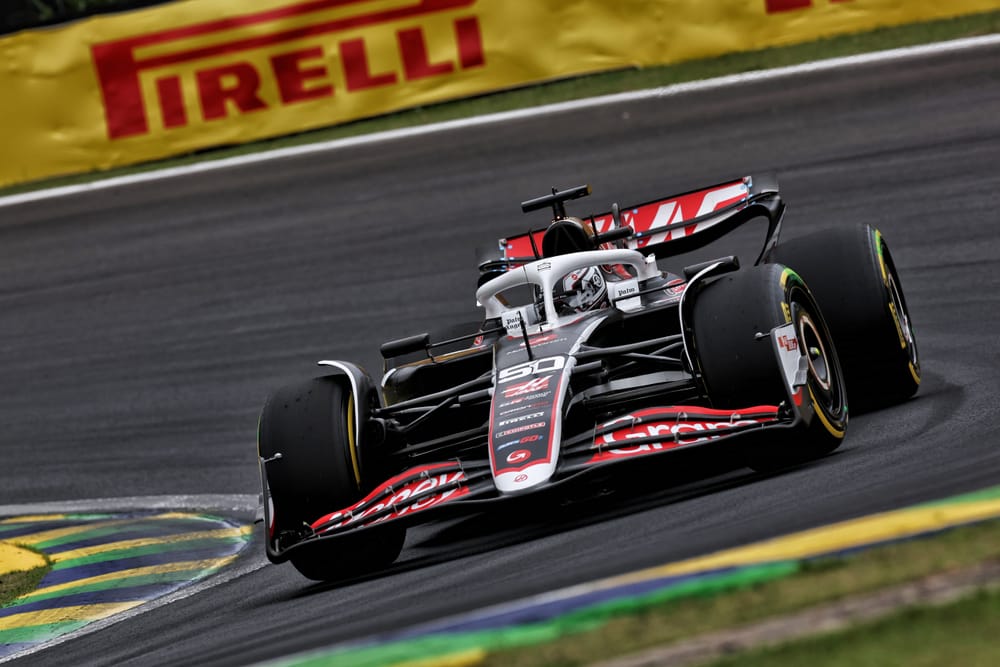Up Next

McLaren had reason to be cautious about its prospects coming into the Brazilian Grand Prix weekend, given the recent form of Ferrari.
But Carlos Sainz had already intimated at Mexico that he wasn't sure Interlagos was the ideal place for the Ferrari - a lot of those slow middle sector corners go on a long time. What the Ferrari is good at is its quick, sharp direction changes through short corners - and acceleration out of them when it's all balanced as nicely as it has been of late.
Furthermore, McLaren had brought a secret weapon here: its new medium downforce rear wing and accompanying beam wing.
The wing has a V-shaped mainplane (ie less area at the outboard ends than in the middle) but a decent size flap. It's generally more efficient throughout the range than the previous version, but is said to give particularly good gains in the DRS range.
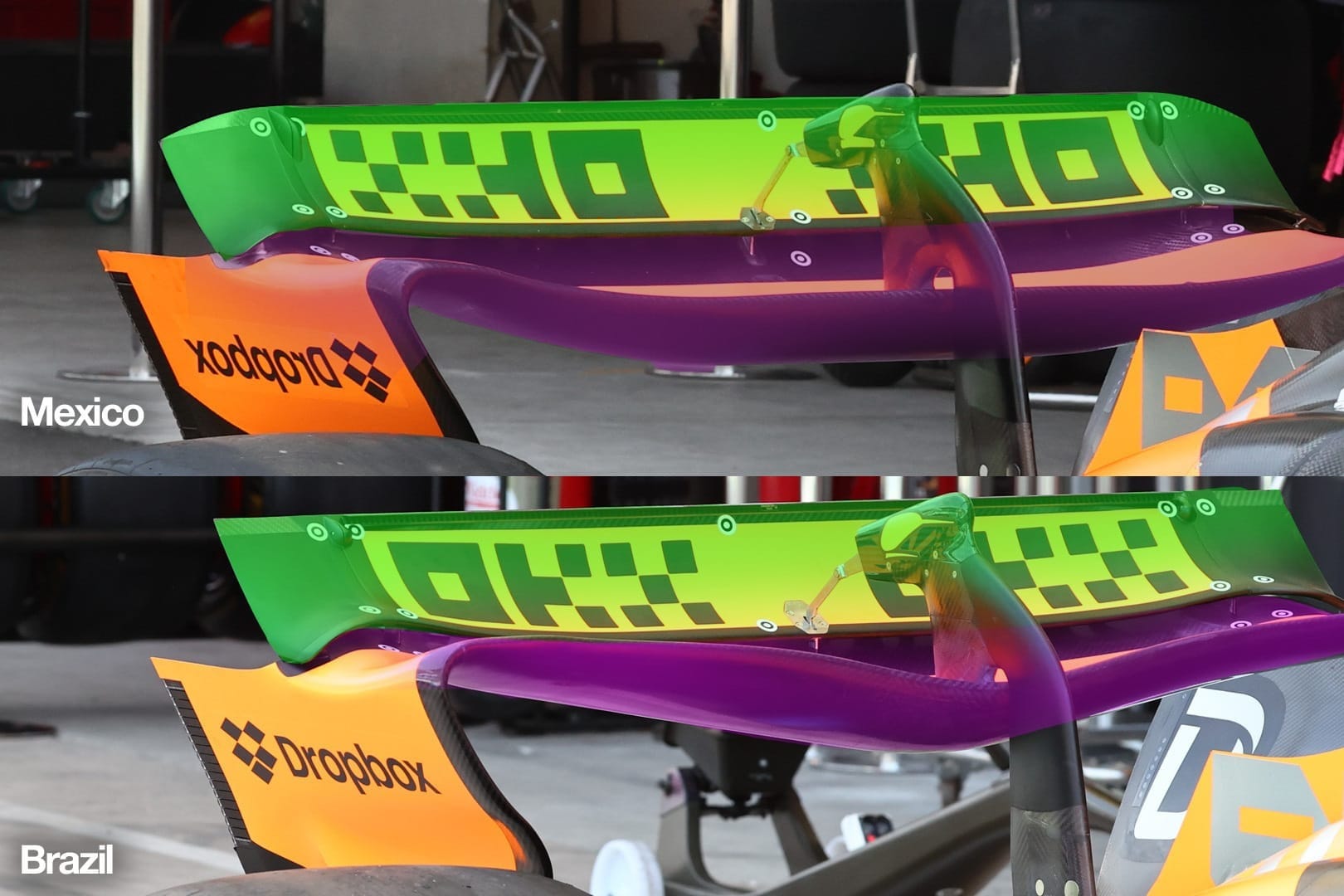
How that all played out was a McLaren that was decisively faster than the Ferrari through the two straights of sector one and with a significant edge through those slow but long sector two corners.
That's the tool Oscar Piastri and Lando Norris had at their disposal around the resurfaced but still very bumpy Interlagos. Piastri made a late surge to nick pole for sprint qualifying from Norris - who abandoned his final Q3 lap after a couple of small but costly errors.
"My first [SQ3] lap wasn’t amazing," said Piastri, "and I knew I could improve - and the tyres held on."
That latter point wasn't a given - because the way McLaren had decided to run the session was to fuel up for a single multi-lap run (with a drive-through the pits in between, when any flap adjustments could be made).
It had looked like rain was on the way, so doing it like this offered the flexibility of getting a good banker lap on board right at the start, but still potentially being able to take advantage of the grip ramp-up if it didn't rain - and without having to be in the pits refuelling and potentially rejoining on a wet track.
That meant their first runs would be penalised by the greater fuel load than those (like Ferrari) which simply waited before going out low-fuelled and fresh-tyred for a single attack lap.
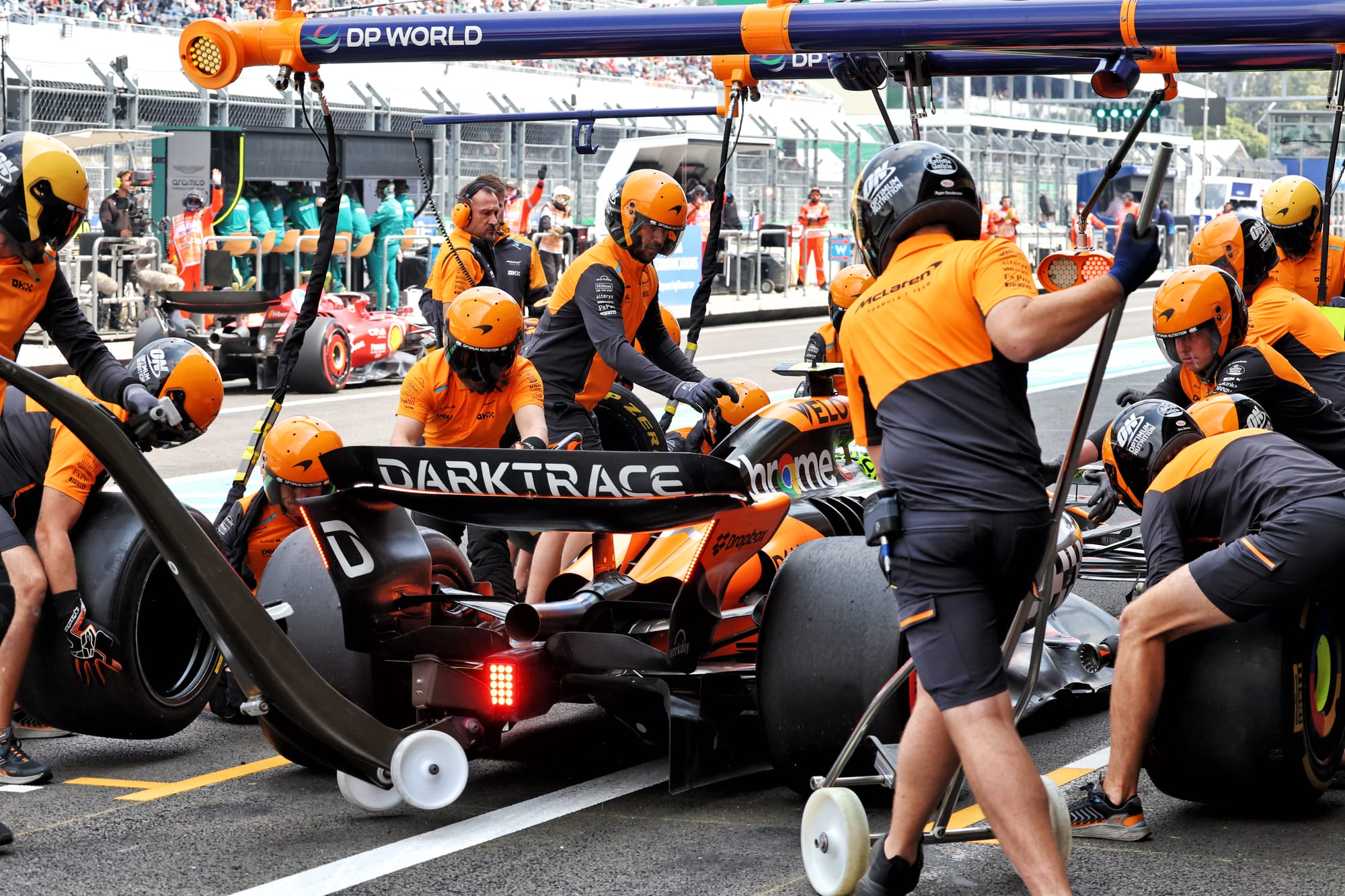
The McLarens' second laps would be compromised by the reduced peak grip of the single set of tyres they are allocated for SQ3.
Maybe that's what caught Norris out - with his moment at Turn 9 - because before then he'd had an apparently big advantage over Piastri, who took a little longer to tune into what the car was asking of him on the tricky low-grip surface.
Norris was flying in SQ1 and SQ2 on the mediums, dancing the car delicately but to devastating effect in the middle sector. But on the softs for SQ3 there was a little too much understeer towards the end of that middle sector.
He decisively asked for an extra 1.5 turns of front wing for his final lap - which was looking good until an oversteer snap into Turn 9 messed up the whole 9-10 sequence after running wide over the exit kerb.
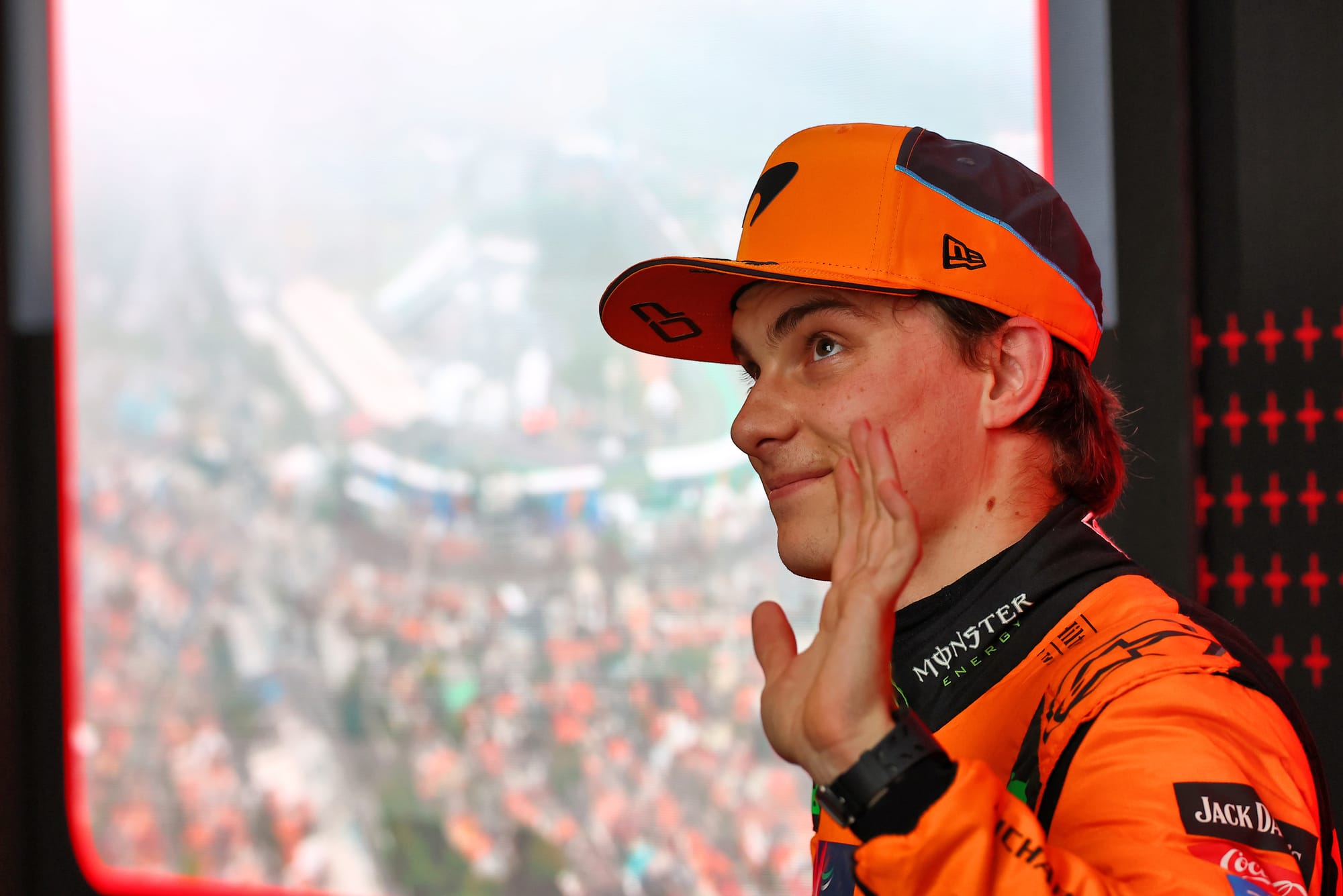
Piastri built his lap and took a lot of Norris's info on-board via his race engineer's analysis of the respective GPS traces. He opted to leave his front wing level unchanged for the last lap and just concentrated on being a little more committed on the brakes into the Senna Esses and a little neater and more composed through Turn 9. It was enough to shade Norris's first lap by 0.07s.
The 0.264s by which Piastri heads third-fastest Charles Leclerc around a super-short lap represents the biggest qualifying advantage McLaren has had since Zandvoort at 0.383% - and a greater advantage than Ferrari has had in any of its recent poles.
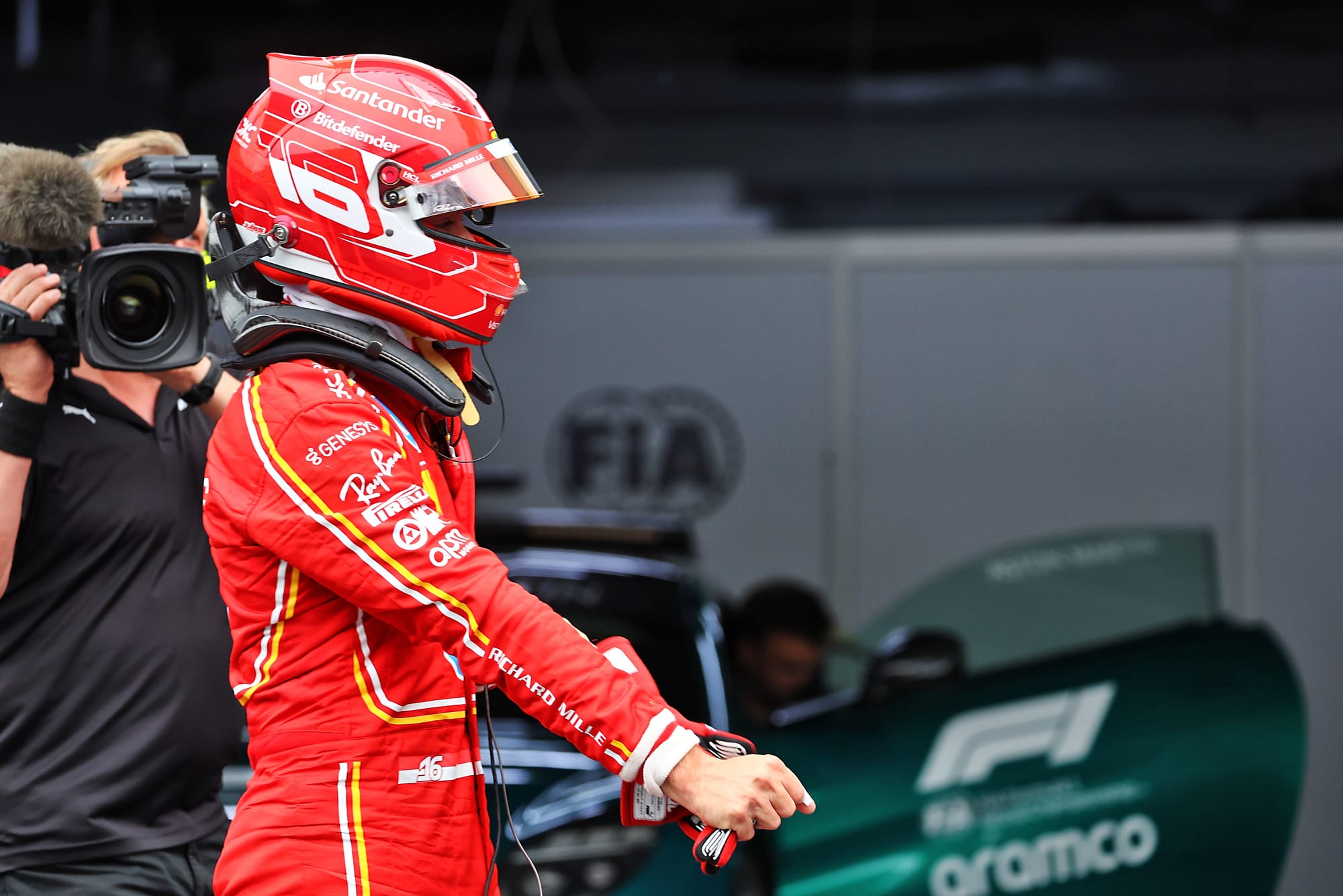
With Sainz also dubious about the Ferrari’s likely competitiveness through the high-speed corners of Qatar, this Brazil form could be crucial for McLaren in its efforts at maintaining its relatively narrow lead in the constructors' championship. Here, Sainz was a couple of tenths adrift of Leclerc and lines up fifth for the sprint.
Max Verstappen's fourth-fastest time, less than 0.1s off Leclerc's, represented a good effort in a Red Bull which "doesn’t really want to turn", as he put it.
He's almost McLaren-quick in sector one but loses a chunky 0.2s in the slow turns of sector two. Ironically, his position behind Leclerc was at least partly because of the tow he inadvertently gave the Ferrari.
Sergio Perez's missing SQ3 was not down to his own performance - in his freshly changed chassis he'd been marginally quicker than Verstappen in SQ1 - but simply through taking to the track too late for his second SQ2 run and failing to get to the line in time. With the track grip ramping up several slower cars beat his time, leaving him only 13th.
The Mercedes is not behaving well over the bumps and George Russell's sixth-fastest time represents the furthest off the pace the car has been since Zandvoort. Lewis Hamilton’s failure to even make SQ3, 0.258s adrift of Russell, just underlined the point; around here, a well-driven Alpine (Pierre Gasly), Haas (a starring Ollie Bearman doing a stand-in), RB (Liam Lawson) or Williams (Alex Albon) was faster than Hamilton.
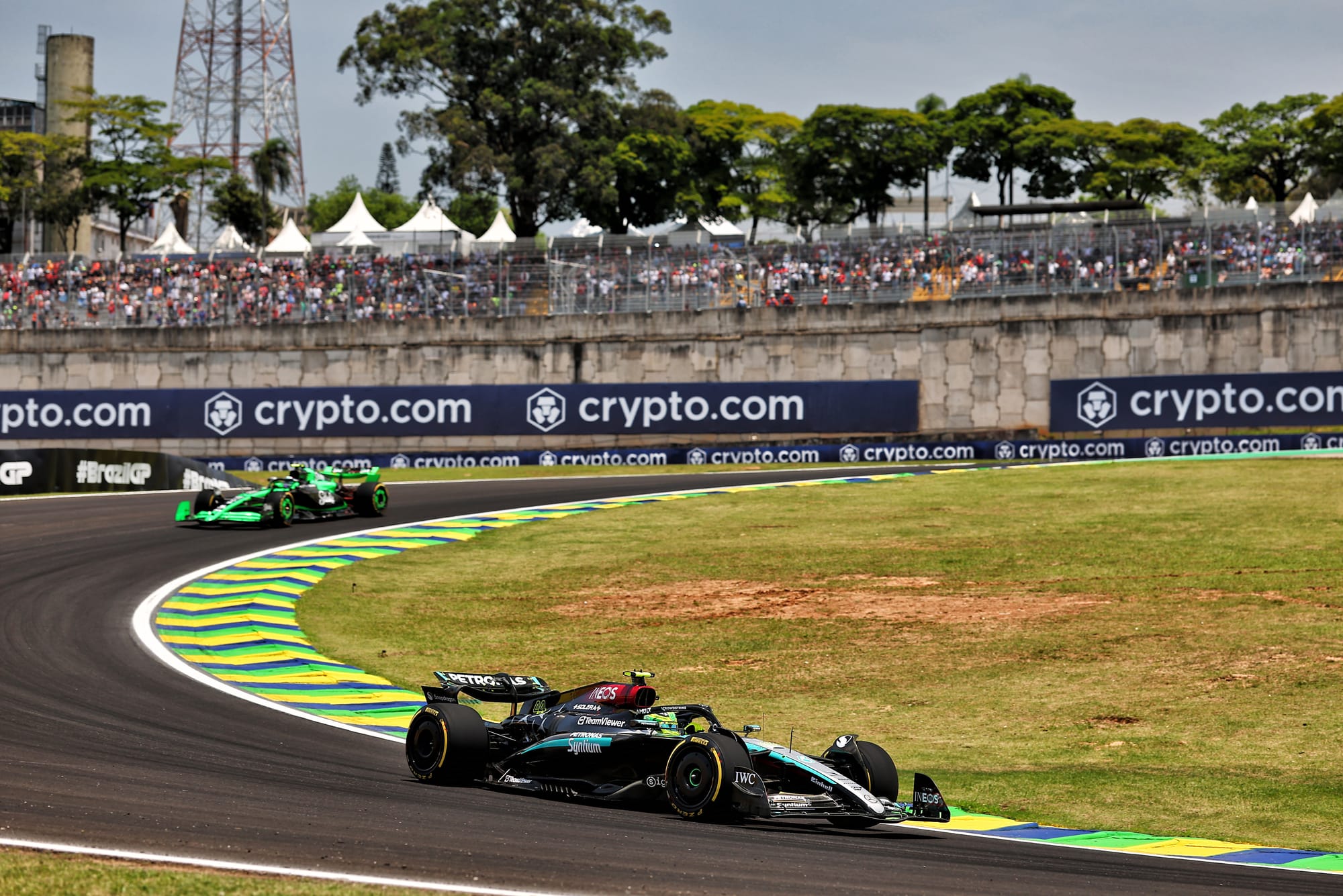
"FP1 was like Baku 2022 for us down the straight it was hitting so hard," he said.
"So we did lift the car. It was a little bit better in terms of it wasn't hitting the deck so badly so I wasn't in pain or anything like that but through corners, the thing's hopping, so the thing's very hard to drive. I just have no confidence in it."


